*This post may have affiliate links, which means I may receive commissions if you choose to purchase through links I provide (at no extra cost to you). As an Amazon Associate, I earn from qualifying purchases. Please read my disclaimer for additional details.
Nothing says something is wrong, like hardwood or laminate floors going soft.
It goes without saying that hardwood floors should remain hard throughout their lifespan. But sometimes things happen, and you may start to notice some parts of your flooring dip or squish when you walk on them.
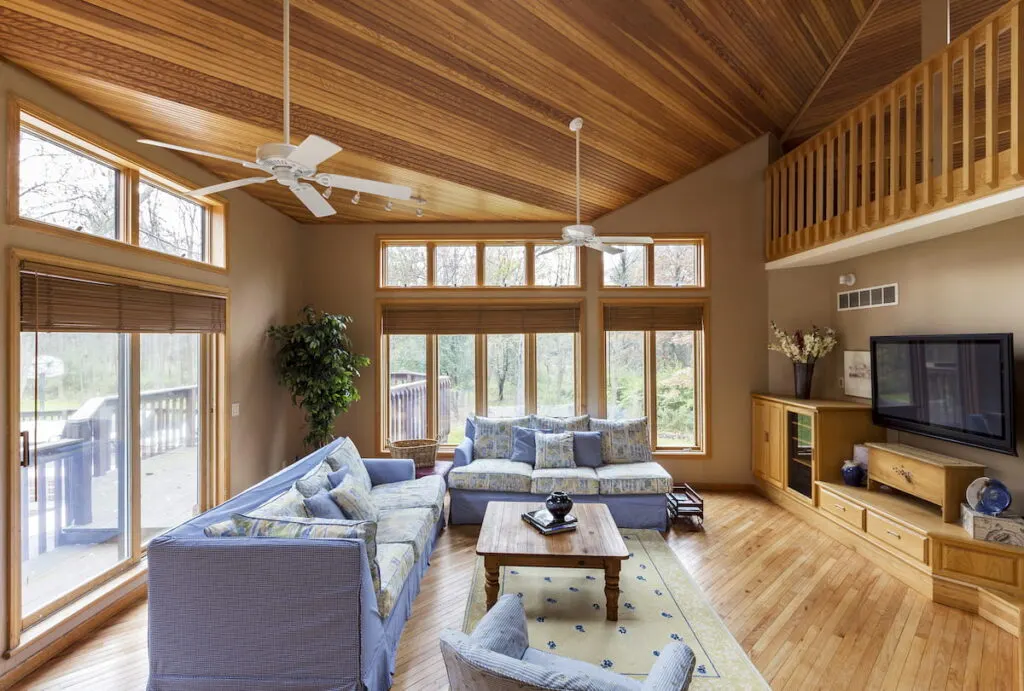
Noticing soft spots in your flooring might indicate a minor or a major problem. But whichever it is – minor or major – you must fix things as soon as possible. If you don’t, the issue may worsen.
Figuring out the cause of a problem is typically the first step in fixing most issues. And the same applies when you notice soft spots on hardwood floors.
Below, we discuss the causes of soft spots in hardwood and laminate floors. After talking about the causes, we go through some fixes for them.
Table of Contents
Hardwood vs. Laminate
Hardwood flooring consists of solid planks of wood. It’s durable and long-lasting.
Laminate flooring boards are often a mixture of wood fibers and plastic, covered with a plastic faux wood grain. Laminate boards are water resistant but don’t last as long as hardwood boards.
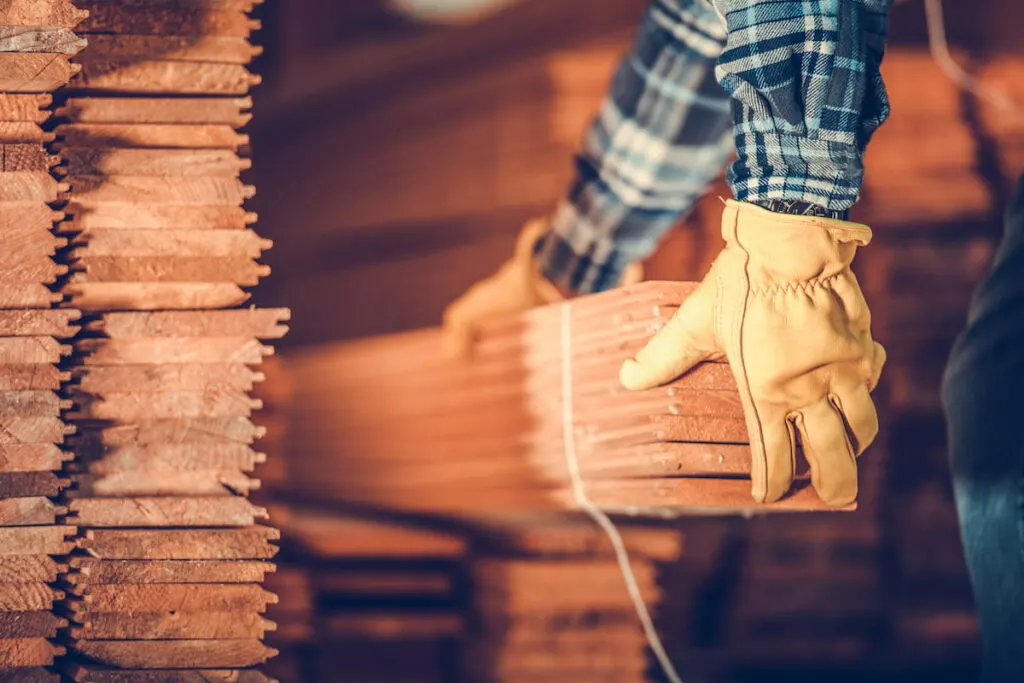
6 Causes of Soft Spots in Hardwood or Laminate Floors
Below we discuss the causes of soft spots in hardwood and laminate floors. Some causes only apply to hardwood.
Water Damage
Water damage is one of the most common reasons for soft spots in hardwood floors. Laminate flooring is water resistant and less likely to suffer water damage.
If the texture of the soft spots in your hardwood floor is soggy, they are most likely there because the flooring has been exposed to excessive moisture.
There are many possible causes of water damage on hardwood floors:
- Mopping the floor with a soaked mop
- Condensation (such as air conditioner condensation)
- Burst or leaky pipes
- Insufficient underlayment beneath the flooring
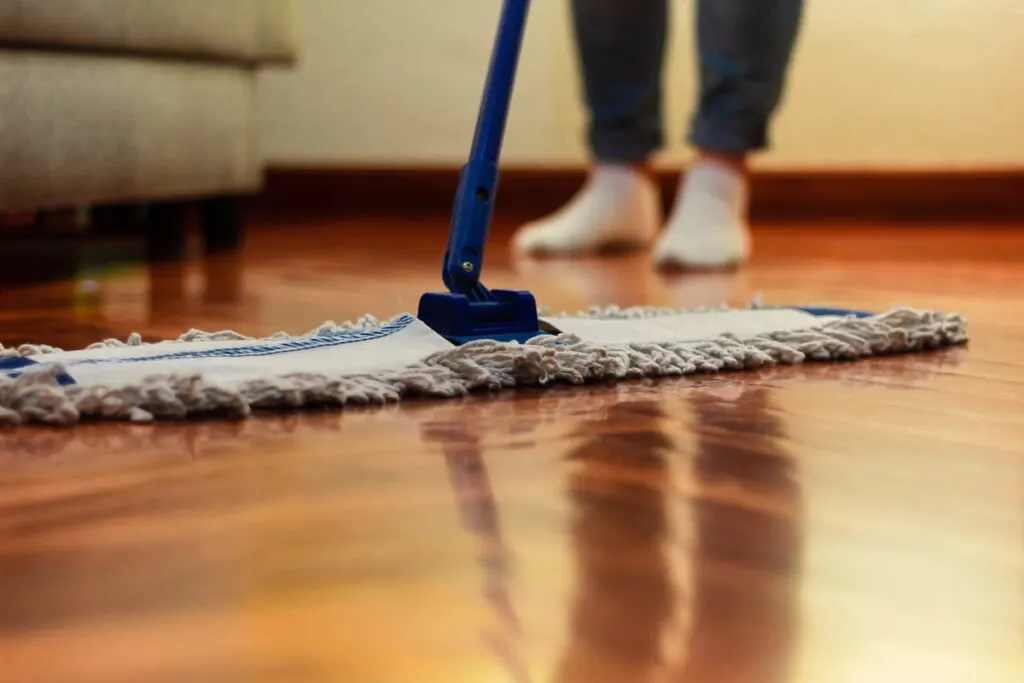
Fix
Depending on the water damage, hardwood flooring may just need repair.
However, replacement is the only option when laminate flooring suffers extensive water damage.
The good news is that if the damage is not extensive, fixing the problem will not cost you much.
Of course, before replacing or repairing the boards that have suffered water damage, you must fix the cause of the damage. If you don’t, you will have the same problem again. So seek out and block the water source.
While assessing the water damage to your floor, pay attention to the floor joists and subflooring.
You should get a professional to check the joists and subflooring for better results.
If the joists and subflooring also suffered water damage, you must replace them. If you don’t, you will still have soft spots in the floor.
Besides replacing the soft spots in your hardwood or laminate floor, take proactive steps to ensure there isn’t a repeat of the water damage. Keep your plumbing in good condition, and take care of the floor.
Pests
In some cases, the sponginess of the soft spots in your hardwood floor comes from pests, not water damage. Termites are the primary pests that damage wood and leave them weak.
So, if you have hardwood flooring (not laminate) and you’ve checked for a water leak, and there isn’t one, the soft spots in your hardwood might come from termites.

Termites typically attack old hardwood floors, but even new ones are not out of reach.
When termites attack your hardwood, you may see the insects on inspection. But if you do not see the insects, you will see piles of wood dust – a memento of the damage they’ve done.
Fix
Any hardwood flooring destroyed by termites must be replaced; you cannot fix wood damaged by termites.
Of course, as with water damage, you must address the termite infestation before you replace the damaged hardwood boards.
To determine which hardwood boards the termites have damaged, apply some pressure on each board.
Sometimes wood broken down by termites appears to be in top shape. However, most of their “insides” have turned to dust. You’d only know they are bad when you press them.
You should get a termite exterminator or pest control service to work on the termites. This way, you wouldn’t have a repeat of the infestation.
After the pest control service has cleared the termites from your home, you may replace the damaged hardwood.
Uneven Subfloor
Stable flooring requires a subfloor with a uniform surface.
While your subfloor might have been level when the flooring was first installed, it may have become uneven as foundation settlement can happen with time.
Unfortunately, soft spots may develop in the hardwood flooring when this happens.
Hardwood or laminate boards standing above dipped subfloors will feel soft when you step on them.
This happens because the dip in the subfloors creates a gap between the boards and the subfloors. So, as you step on such boards, they bend inwards since the subfloors are not providing necessary support.
Also, if your floorboards are loosely attached to the floor joists, the extra movements can create soft spots in hardwood.
When an uneven subfloor is the cause, the soft spots in the hardwood do not bend upwards. They typically remain flat, only dipping when you step on them.
Fix
You can fix an uneven subfloor in three ways:
Thin-set Mortar
The first method involves removing the hardwood boards with soft spots and spreading thin-set mortar over the troughs of the subfloor.
The thin-set mortar will even out the subfloor, so the hardwood boards will find support when you step on them. If choosing this method, ensure the thin-set mortar you buy is for hardwood flooring.
Expanding Foam
The second method involves drilling a hole for an air inflator needle into the floor. With this hole and the inflator needle, you will apply expanding foam to the troughs beneath the hardwood boards.
The expanding foam evens out the subfloor, ensuring the hardwood soft spots get some support.
While the expanding foam method is the fastest, it has its drawbacks. For instance, the hardwood boards may bend upwards if you apply too much expanding foam.
Secure the Floorboards
When you use floorboards as a subfloor, and their loose connection to the joists causes soft spots, fasten the layers of floorboards together. A few screws should help with this.
(This fix only applies to hardwood flooring.)
Lack of an Expansion Gap
You may feel some soft spots if your hardwood or laminate flooring does not come with an expansion gap. The absence of an expansion gap creates a bulge-like softness when you walk on the floor.
There must be at least a ½-inch expansion gap when installing hardwood or laminate flooring. It could be more or less, depending on the manufacturer’s recommendation.
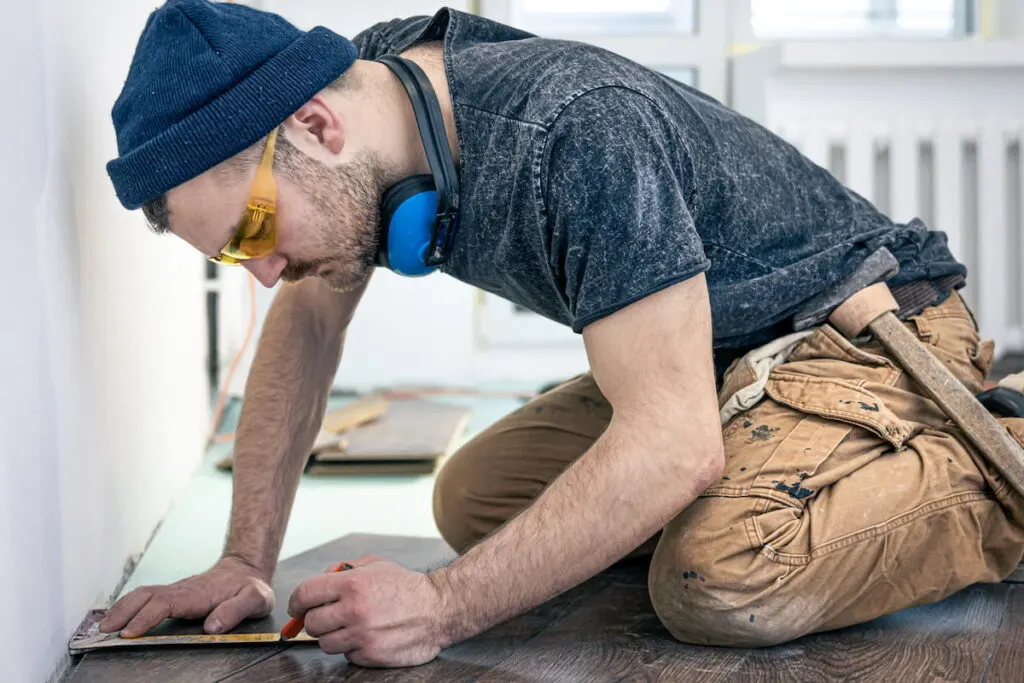
The expansion gap is a space that should be between the wall and the edge of the hardwood flooring. It allows hardwood boards to expand.
Consequently, the boards do not have to bend upward and create soft spots.
Contractors typically cover expansion gaps with transition trim for aesthetics. So, you may not readily see the expansion gap in your flooring.
Note that if your hardwood flooring has an expansion gap but is nailed or similarly attached to the ground, it is as good as having no expansion gap.
In other words, nailed hardwood boards will expand as if they do not have an expansion gap. So, you’d still find soft spots.
Fix
Fixing soft spots in hardwood or laminate flooring due to a lack of expansion gap is pretty straightforward: introduce an expansion gap where there isn’t one.
To add an expansion gap to your hardwood or laminate flooring:
- Seek out the soft spots.
- After that, follow the trail of the boards in the same line to the nearest wall.
- Remove the trim to show where the wall and the hardwood edge meet.
- Then shave the hardwood board that touches the wall by ½ inches (if there’s a manufacturer recommendation, follow that).
- Insert the altered hardwood floorboard back into place and mount the trim.
- You may still notice that the hardwood boards bend upward. But this will even out with time. In some cases, placing some weights on the spots might help.
Poor Underlayment Installation
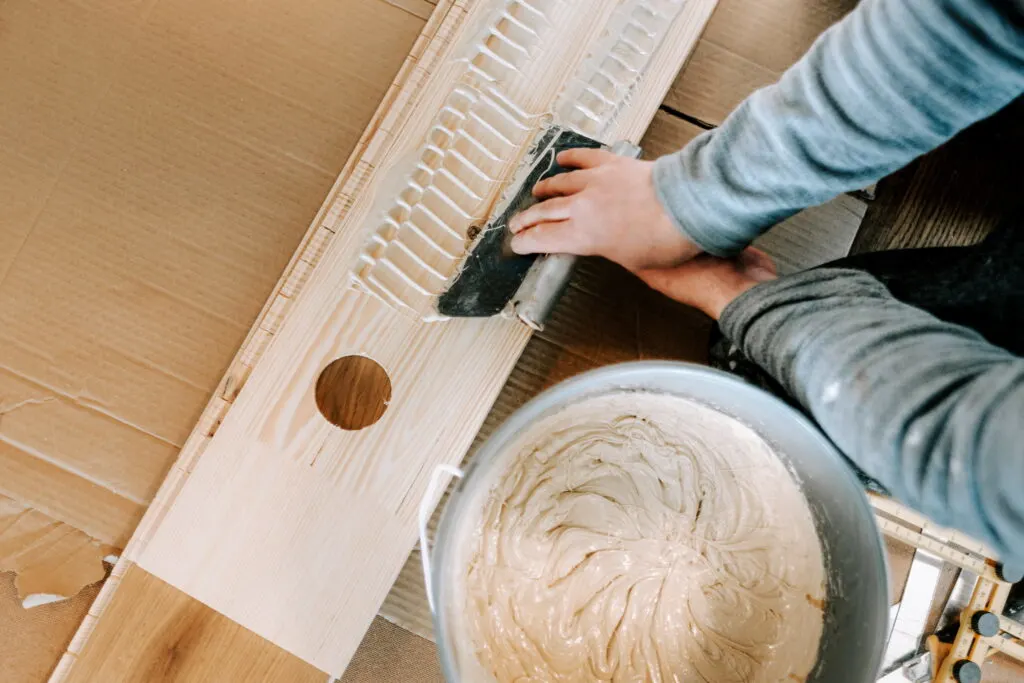
Poor underlayment installation can leave soft spots in your hardwood or laminate flooring. But besides installation issues, using the wrong underlayment type for hardwood might create soft spots.
Using multiple layers of underlayment when installing your flooring is one of the reasons you may have soft spots in your hardwood.
Also, you will have soft spots in your hardwood or laminate floor if you or the contractor did not lay the underlayment smoothly during installation.
There are four main types of underlayment for flooring: felt, rubber, cork, and foam. Of these four, the option you choose for your hardwood or laminate floor will depend on some factors.
When choosing an underlayment for hardwood or laminate, you’d have to consider the room and wood type. If you are unsure how to go about it, speak with a professional.
Fix
If the underlayment was not installed correctly, you could fix the soft spots in your flooring by reinstalling it appropriately. This means reinstalling the flooring.
Redoing the flooring also applies if you or the contractor used the wrong underlayment. Of course, you’d have to get the correct underlayment this time.
Resources
- https://www.thesharedweb.com/what-causes-soft-spots-in-floor/
- https://www.thecoldwire.com/how-to-fix-soft-spot-in-floor/
- https://www.allaboutmaterials.com/how-to-fix-5-likely-causes-of-a-spongy-laminate-floor
- https://www.fromtheforest.com/blogs/fromtheforest/hardwood-floor-underlayment-options
- https://www.thespruce.com/engineered-hardwood-vs-solid-flooring-1821677
